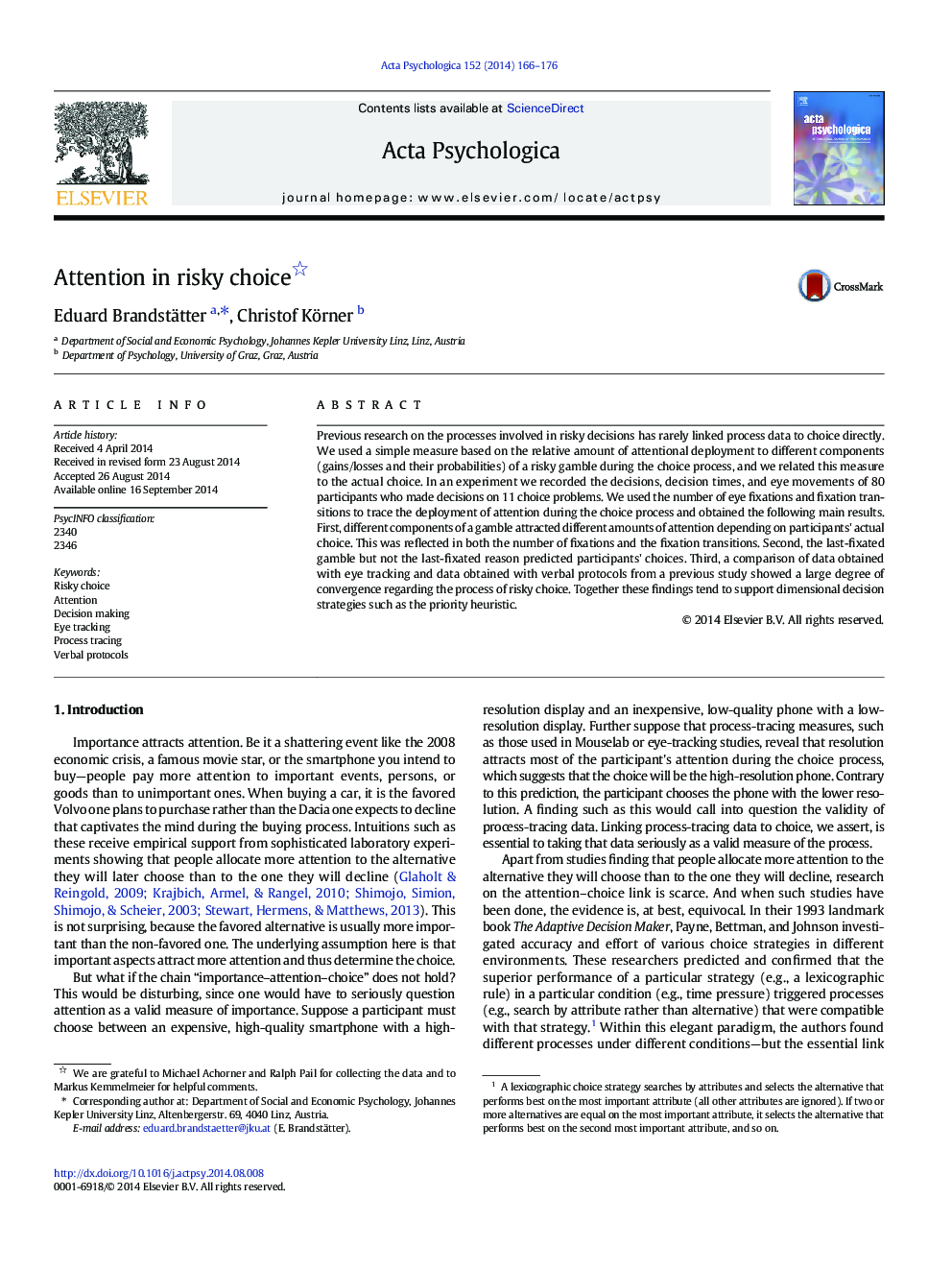| Article ID | Journal | Published Year | Pages | File Type |
|---|---|---|---|---|
| 919797 | Acta Psychologica | 2014 | 11 Pages |
•Attention depended on the dimension that determined the choice.•Transitions occurred within the dimension that determined the choice.•The last-fixated gamble and not the last-fixated dimension predicted choice.•Verbal data, attention measures, and choices tend to support dimensional processes.
Previous research on the processes involved in risky decisions has rarely linked process data to choice directly. We used a simple measure based on the relative amount of attentional deployment to different components (gains/losses and their probabilities) of a risky gamble during the choice process, and we related this measure to the actual choice. In an experiment we recorded the decisions, decision times, and eye movements of 80 participants who made decisions on 11 choice problems. We used the number of eye fixations and fixation transitions to trace the deployment of attention during the choice process and obtained the following main results. First, different components of a gamble attracted different amounts of attention depending on participants' actual choice. This was reflected in both the number of fixations and the fixation transitions. Second, the last-fixated gamble but not the last-fixated reason predicted participants' choices. Third, a comparison of data obtained with eye tracking and data obtained with verbal protocols from a previous study showed a large degree of convergence regarding the process of risky choice. Together these findings tend to support dimensional decision strategies such as the priority heuristic.
